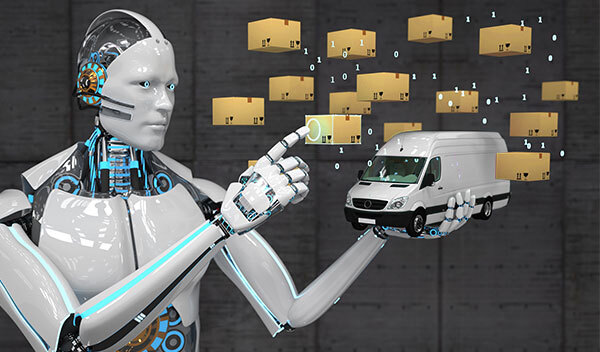In the United States, recent policies are driving the adoption of zero-emissions trucks. The industry seems to be fascinated with the idea of the adoption of future electric trucks but, at the same time, everyone knows it’s going to be a long, tedious, and rather complicated process.
Electrifying the most heavily polluted long-haul routes presents the greatest challenges. Last year witnessed significant advancements in the ongoing drive to electrify all types of trucks across the nation.
A notable development came from the Environmental Protection Agency (EPA) with the publication of its clean trucks proposal, marking a significant shift in truck emissions regulations that haven't seen such a change in years.
The proposal introduced new fuel standards aimed at reducing the emission of smog-forming nitrogen oxide from trucks, set to take effect in 2027. However, environmental groups expressed their criticism of the proposal, contending that it fails to address a major source of air pollution promptly.
On the other hand, trucking industry associations cautioned that the proposal would impose substantial cost burdens on purchasing new trucks, potentially leading to truckers prolonging the use of older and more polluting models.
In a potential response to assertions that the clean-truck technology is not advancing quickly, the Department of Energy issued a report around the same time, showcasing the strides made by battery-electric and fuel-cell electric trucks in achieving cost parity with their diesel-powered counterparts.
As per a study conducted by the National Renewable Energy Laboratory, smaller battery-electric trucks are projected to achieve this objective by 2030, while heavy-duty trucks that operate within a daily range of less than 500 miles are expected to reach cost parity by 2035. In contrast, hydrogen fuel cells are likely to become cost-competitive for longer-haul trucks.
Accelerating the Adoption of Future Electric Trucks
Over the past few years, prominent truck manufacturers including Daimler, Ford, Navistar, and Volvo have been introducing a wide array of electric-powered vehicles, ranging from vans and panel trucks to long-haul semi trucks and specialized terminal tractors, at an accelerating rate.
Just four or five years ago, there was widespread skepticism regarding the cost and range competitiveness of future electric trucks compared to their fossil fuel-powered counterparts.
However, the tables have turned significantly. According to a recent study, electric-powered trucks are projected to surpass gasoline and diesel vehicles in terms of affordability for nearly half of all trucks on the road by 2030. By 2035, this cost advantage is expected to extend to nearly the entire truck fleet.
This shift in affordability is a crucial factor influencing the speed of electric truck adoption. Unlike consumer vehicles, which rely on broader market trends beyond cost, commercial trucks are typically replaced relatively quickly when newer models offer lower long-term expenses.
The transition to future electric trucks will play a pivotal role in reducing greenhouse gas emissions in the transportation sector, which currently account for over one-third of total emissions in the United States.
While medium and heavy-duty trucks constitute less than 5 percent of the overall vehicle population, they contribute approximately 29 percent of the sector's total greenhouse gas emissions, equivalent to about 7 percent of the nation's overall emissions.
Challenges and Opportunities for Different Trucks
Transitioning heavy-duty trucks away from fossil fuels poses the greatest challenge. The forecast indicates that battery electric vehicles (BEVs) and fuel-cell electric vehicles (FCEVs) will dominate the markets for light and medium-duty trucks.
However, hybrid electric vehicles (HEVs) along with diesel and natural gas-fueled internal combustion vehicles (ICEVs) are expected to continue comprising a substantial majority of the heavy-duty truck segment.
Due to the vast diversity and range of applications within the trucking industry, the pace of electrification will vary significantly. Some specific use cases are expected to undergo rapid electrification, while others may progress at a much slower pace.
Numerous shorter-haul truck routes are already primed for an immediate transition to all-electric operations. Test drives conducted as part of this evaluation involved a wide range of vehicles, including heavy-duty electric tractor-trailers from Volvo, Peterbilt, BYD, and Freightliner, terminal tractors from Kalmar, Lonestar SV, and Orange EV, medium-duty box trucks from Peterbilt and Lion, and cargo and step vans from Lightning eMotors, Motiv, and Workhorse.
Among these vehicle classes, electric vans have emerged as the frontrunners in terms of early adoption. Major companies such as UPS, FedEx, and Amazon are actively planning extensive fleet conversions to electric vans, enabling daily deliveries and overnight recharging at depots.
Notably, the demand for these medium-duty delivery vehicles has surged, with advance orders from U.S. companies exceeding 120,000 units.
Terminal Tractors and Challenges for Long-Haul Semi Trucks
Terminal tractors, responsible for moving cargo containers within ports and logistics centers, are a target for early adoption. By 2030, all terminal tractors could be electric, potentially reducing air pollution, particularly in communities with higher proportions of lower-income residents who have long faced health risks from diesel exhaust.
Long-haul semi trucks pose more challenges for electrification. Companies like Daimler, Volvo, and Tesla plan to deliver electric vehicles starting in late 2023, driven by demand from major shippers such as Walmart and nationwide freight companies like NFI Industries. However, transitioning this vehicle class to electric is more complex.
Due to their longer routes, long-haul semi trucks cannot conveniently return to central charging depots nightly. This necessitates the establishment of a network of fast-charging stations along major transportation routes. Additionally, the pressure to expedite cargo delivery makes extended waiting times for a full recharge less feasible.
Overcoming the Elephant in the Room: Charging Infrastructure for Electric Trucks
Limited charging infrastructure for heavy-duty electric trucks in the US is a significant concern. The existing pilot projects await faster-charging technology to support truckers' schedules.
Charging is a challenge for both long-haul and home-based charging. Public charging focus eases consumer range anxiety, but medium and heavy-duty vehicles strain power grids. States with zero-emissions truck mandates face grid strain and plan for federal funding.
Developing truck refueling infrastructure is crucial by 2025-2026. Grid infrastructure for large charging loads becomes a barrier in 18 months when fleets adopt electric trucks.
About the Author: Sara Naveed
Sara Naveed is a creative and digital content writer who uses her creative skills to develop and edit professional web content. Being a writer has always been her dream. She earnestly hopes people appreciate her writing—an asset she deeply covets. Using her 8+ years of working experience, she writes for trucking industry experts who are always looking for better technological solutions to their problems.











